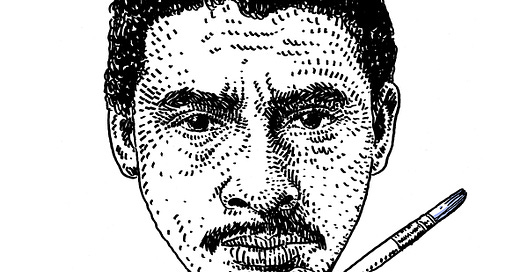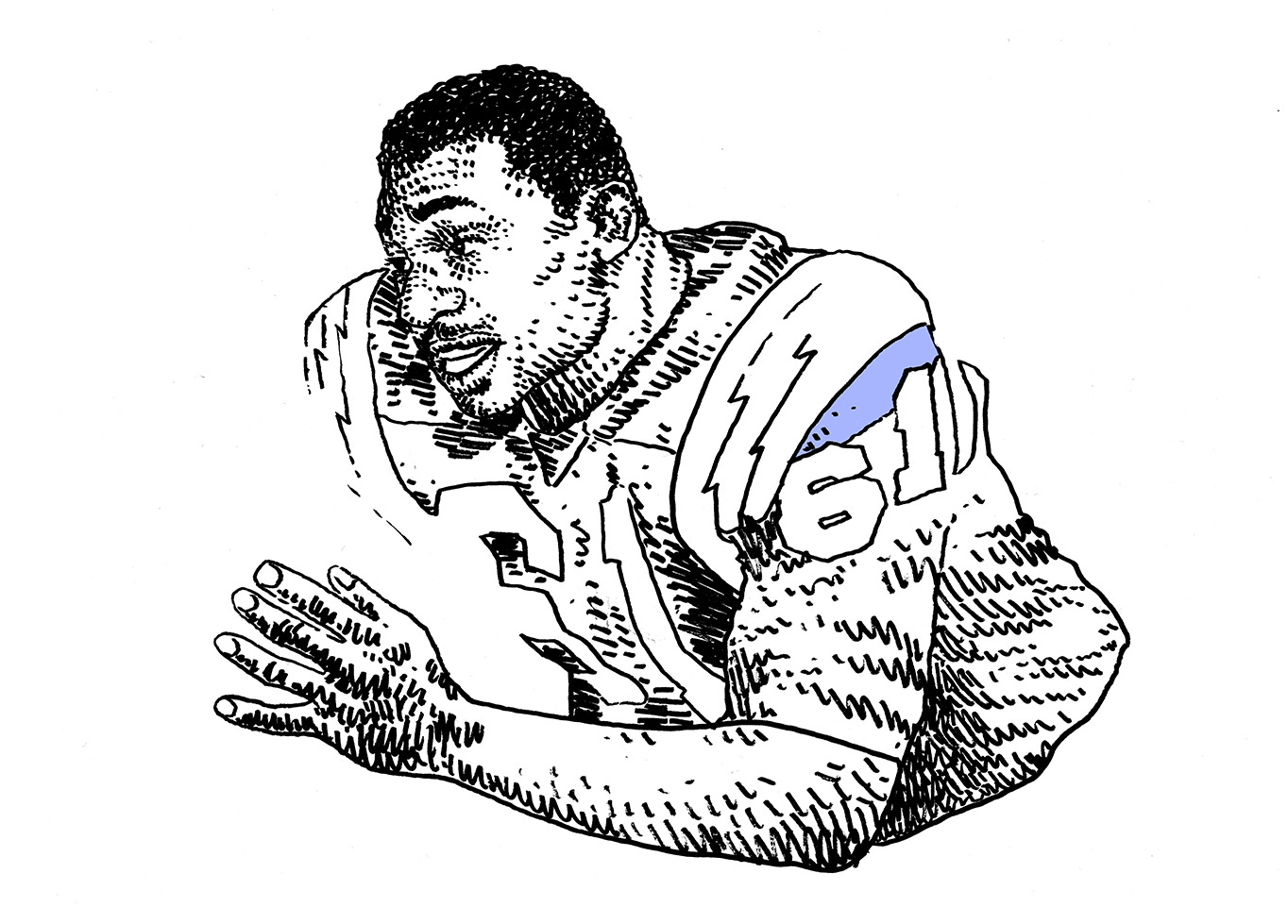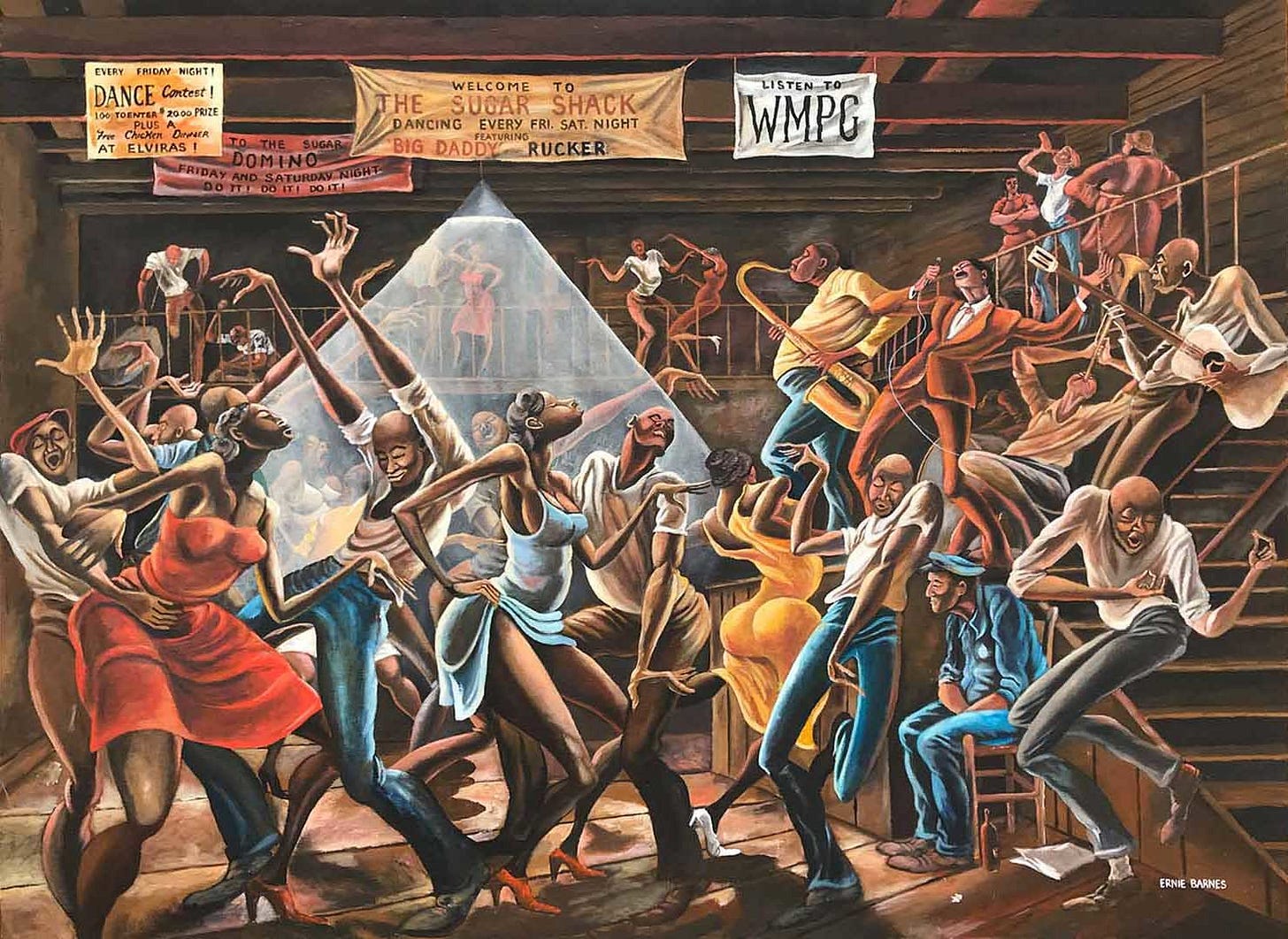Ernie Barnes was a professional football player before he was a professional painter. But he was an artist before he was any kind of an athlete. He was an artist from the time he was a young boy in North Carolina. His mother was a housekeeper for a wealthy white lawyer, and sometimes Ernie would go with her to work and spend hours on the couch leafing through books of paintings by old masters.
“By the time I started first grade, I knew Rembrandt,” Barnes told the Los Angeles Times. “I knew the works of Michelangelo.”
He was pudgy and shy and he hid from the world behind his sketchbook until a junior high school teacher pulled him into the weightroom. A few years later, he was getting a full ride scholarship to play football, and a few years after that, he was drafted by the Baltimore Colts as an offensive lineman.
Barnes bounced around from the Colts to the New York Titans to the San Diego Chargers to the Denver Broncos. He struck up a lifelong friendship with Jack Kemp, the future Bob Dole running mate. His teammates called him Big Rembrandt -- one of the best sports nicknames of all time, I think. His coaches used to chew him out and fine for sketching during practice. Then Barnes realized he had simply had enough.
“One day on the playing field I looked up and the sun was breaking through the clouds, hitting the unmuddied areas on the uniforms, and I said, ‘That’s beautiful!’ I knew then that it was all over being a player. I was more interested in art. So I traded my cleats for canvas, my bruises for brushes, and put all the violence and power I’d felt on the field into my paintings.”
This is the last official Sports Stories newsletter in its current weekly form. I can’t say that Adam or I had a moment like Ernie Barnes did, with the sun breaking through the clouds. But that’s okay -- because it’s not all over for us. It’s just changing. We’re not done writing and drawing about weirdo sports history. We’re just done with publishing through this particular venture-capital backed platform on a weekly basis in exchange for donations.
I’m going to use this final newsletter to offer a small peek behind the scenes. There were some weeks when I wrote the entire story before I saw what Adam had drawn. There were other weeks where we kind of staggered through it all together. And there were others still when I started with his drawings, and the writing followed from whatever emotion they stirred. Those were my favorite weeks. His work has made my writing better, and it has also made me better at simply appreciating art.
This is one of the reasons I am glad we are ending on a painter. I’m glad because it’s appropriate. Sports Stories is a visual medium. It seems like it would be impossible for me, without the toolkit of an art critic, to truly describe the work of Ernie Barnes. But I can say that you might recognize it. For example, this painting Sugar Shack:
What I like about his paintings is that they are instantly empathetic. What I like about them is the way they seem to be in motion even in the stillness inherent to their form. There is life in them. The good parts and the bad. Barnes said that he painted people with their eyes closed because he thought we were blind to one another’s suffering.
He quit football and transitioned immediately into a career as a working artist. In what is probably the most unique example of arts patronage I can think of, Barnes continued to collect his AFL salary for a full season while painting full time, thanks to the generosity (and creativity) of New York Jets owner Sonny Werblin.
Here’s a paragraph from the biography on Barnes’ website that I find compelling:
All his life, Barnes was ambivalent about his football experience. In interviews and in personal appearances, Barnes said he hated the violence and the physical torment of the sport. However, his years as an athlete gave him unique, in-depth observations. “(Wilson) told me to pay attention to what my body felt like in movement. Within that elongation, there’s a feeling, an attitude and expression. I hate to think, had I not played sports, what my work would look like.”
Think about how much conviction it would take to quit a job as a professional athlete to become a painter. With kids to feed, with the pressure of your peers and coaches, with the fact that for as hard as it was to make it as a pro athlete, making it as a fine artist in 1960s America must have been a hundred times harder.
But Ernie Barnes did it. The art caught on. The elongated figures in his work became instantly recognizable. Barnes painted commissions and album covers. He moved to Los Angeles. Rich and famous people bought his canvases, and galleries displayed them. He wasn’t a football player anymore, or even a former football player. He was just Ernie Barnes the artist.
Thank you for reading Sports Stories. We will be back after the Thanksgiving holiday with an exciting update on the future of this project.






Thanks for such a great ride Adam and Eric. Look forward to what comes next.